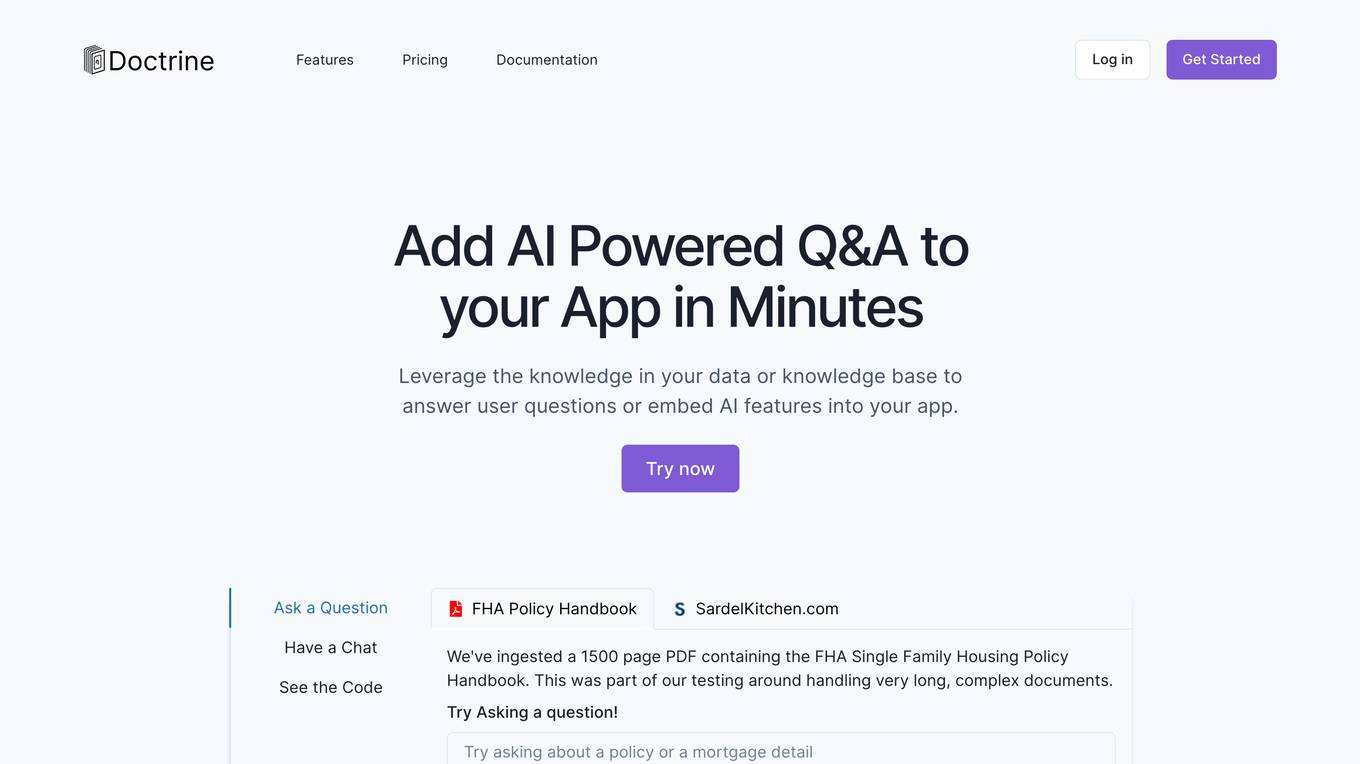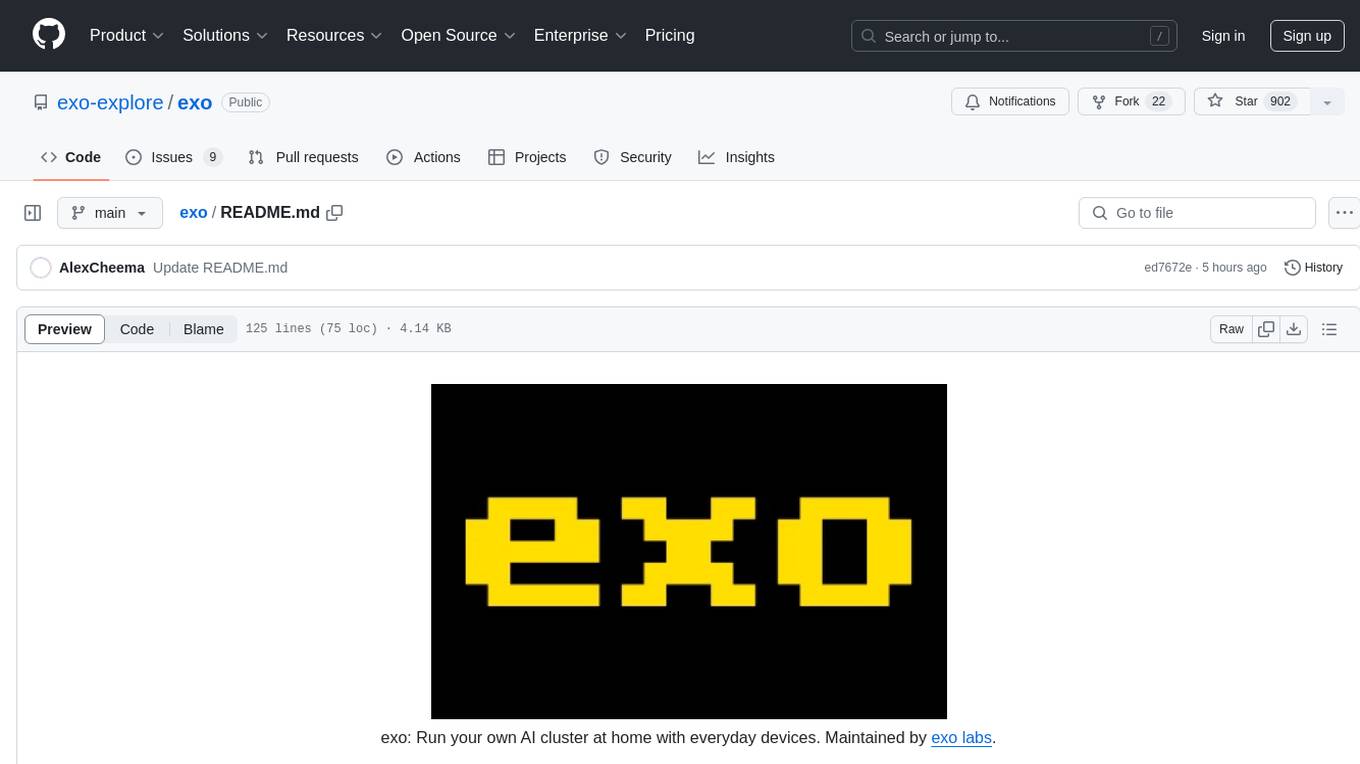Best AI tools for< Partition Models >
1 - AI tool Sites

Doctrine
Doctrine is an AI-powered application that allows users to add AI-powered Q&A features to their apps in minutes. It leverages knowledge from data or knowledge bases to answer user questions or embed AI features. With the ability to ingest content from various sources like websites, documents, and images, Doctrine simplifies the process of knowledge extraction and enables seamless integration of AI capabilities into applications.
1 - Open Source AI Tools

exo
Run your own AI cluster at home with everyday devices. Exo is experimental software that unifies existing devices into a powerful GPU, supporting wide model compatibility, dynamic model partitioning, automatic device discovery, ChatGPT-compatible API, and device equality. It does not use a master-worker architecture, allowing devices to connect peer-to-peer. Exo supports different partitioning strategies like ring memory weighted partitioning. Installation is recommended from source. Documentation includes example usage on multiple MacOS devices and information on inference engines and networking modules. Known issues include the iOS implementation lagging behind Python.